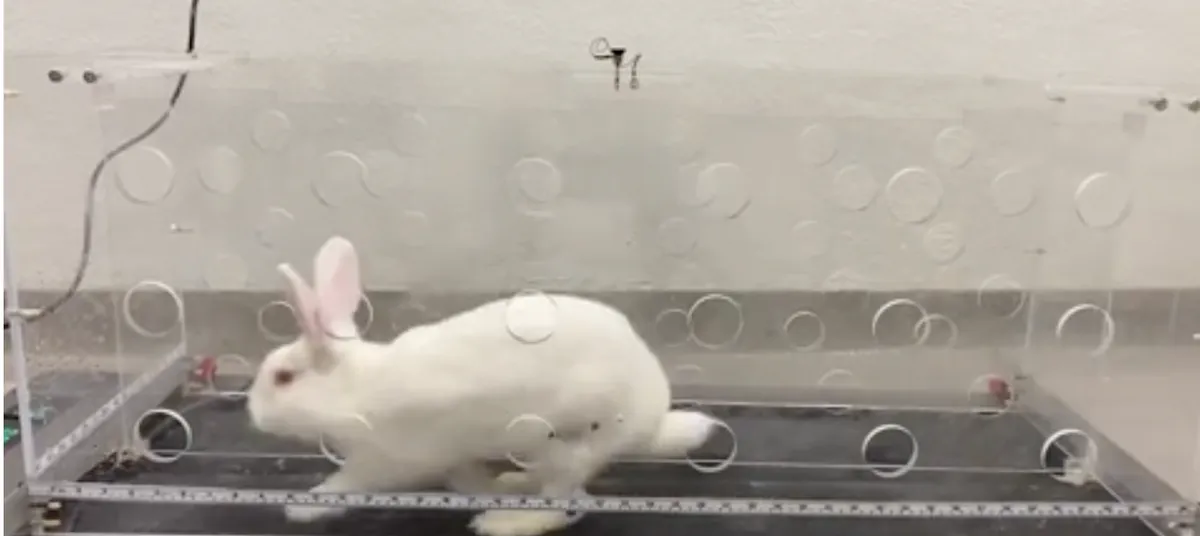
This bunny could hold the key to fixing your bum knee. Researchers at the University of Connecticut have successfully regrown damaged cartilage in a rabbit’s knee joint using biodegradable polymers with a nifty electric property.
It is currently estimated that around 10 per cent of the UK’s population have been diagnosed with arthritis, a disease that causes the pads of cartilage that cushion our joints to deteriorate.
Eventually, it can lead to cartilage becoming so worn down that bone begins to grind on bone, making everyday activities such as walking extremely painful.
Current treatments involve physiotherapy and painkillers, but severe cases often require surgery to replace damaged cartilage using a healthy piece taken from elsewhere in the body, or from a donor.
Now, a team led by bioengineer Thanh Nguyen have designed a treatment that uses electrical signals to stimulate cartilage regeneration.
They implanted a tissue scaffold made out of nanofibres of poly-L lactic acid (PLLA), a biodegradable polymer often used to stitch up surgical wounds, into the knee of a rabbit with damaged cartilage.
This material has a property known as piezoelectricity, which means it produces a small burst of electrical current when it is squished.
Once the rabbit was placed onto a treadmill to exercise after receiving the implant, its hopping movements triggered the piezoelectric bursts in the PLLA which stimulated the cartilage to grow back.
"Piezoelectricity is a phenomenon that also exists in the human body. Bone, cartilage, collagen, DNA and various proteins have a piezoelectric response. Our approach to healing cartilage is highly clinically translational, and we will look into the related healing mechanism," said Dr Yang Liu, a postdoctoral fellow in Nguyen’s group and the lead author of the study.
The team now plan to observe the animals treated for a longer period and to apply the same technique to older animals to see if it is still as effective.
Read more about joint pain: